Abstract
An indirect ELISA developed for the serological detection of Salmonella typhimurium in chickens using lipopolysaccharide as detecting antigen has been evaluated further in experimental infections. Following oral infection of 24-week-old laying hens with an invasive strain of S. typhimurium, high titres of specific circulating IgG were induced which were maintained for 20 weeks. Similar IgG titres were found in egg yolk. When 4-day-old chickens were infected high antibody titres persisted for 45 weeks. Chickens inoculated orally or intramuscularly with different numbers of S. typhimurium organisms showed graded serum IgG responses to LPS. The IgG titres in experimentally infected in-bred lines of chickens which showed greater genetic resistance to salmonella infection were significantly lower than those found in more susceptible lines. Oral and intramuscular infection with 18 different types of enterobacteria, including avian pathogenic E. coli, Citrobacter spp., Klebsiella spp., Proteus spp. and citrobacter-like organisms possessing some salmonella LPS (none possessed the O-4 antigen) and flagella antigens, did not induce S. typhimurium LPS-specific IgG responses. Chickens infected orally with rough or non-flagellate mutants of S. typhimurium did not induce high titres of LPS or flagella-specific IgG respectively. Sera obtained from S. typhimurium-infected chickens showed much higher titres against S. typhimurium LPS than with those antigens from other serotypes, including S. enteritidis.
Full text
PDF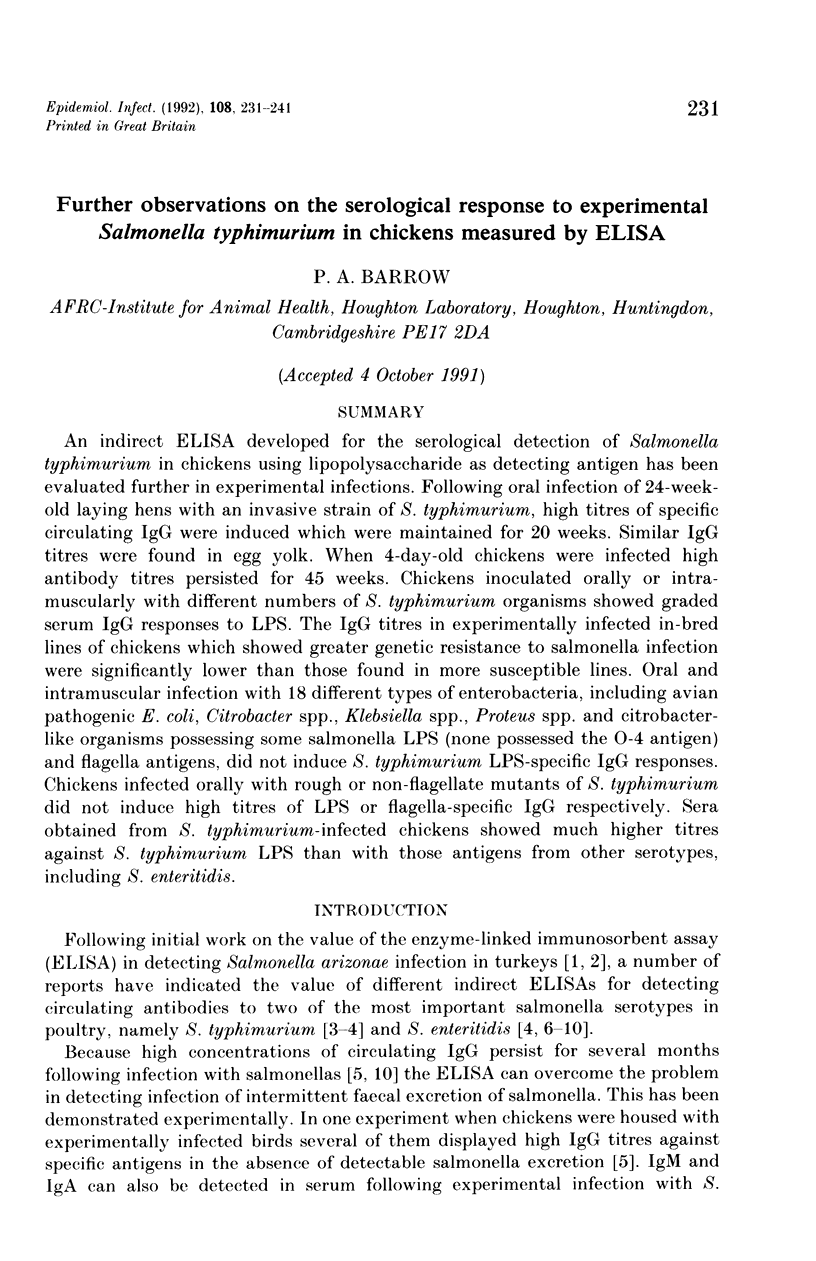

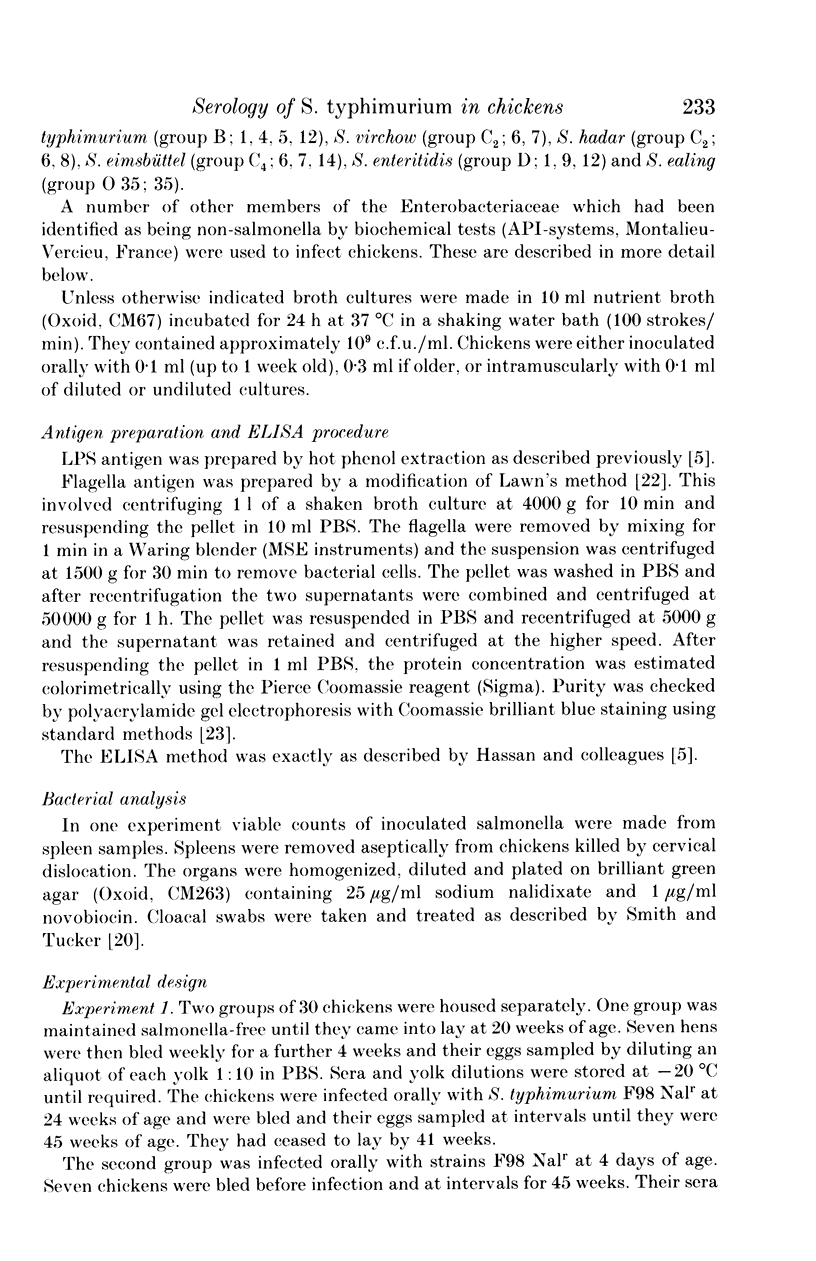
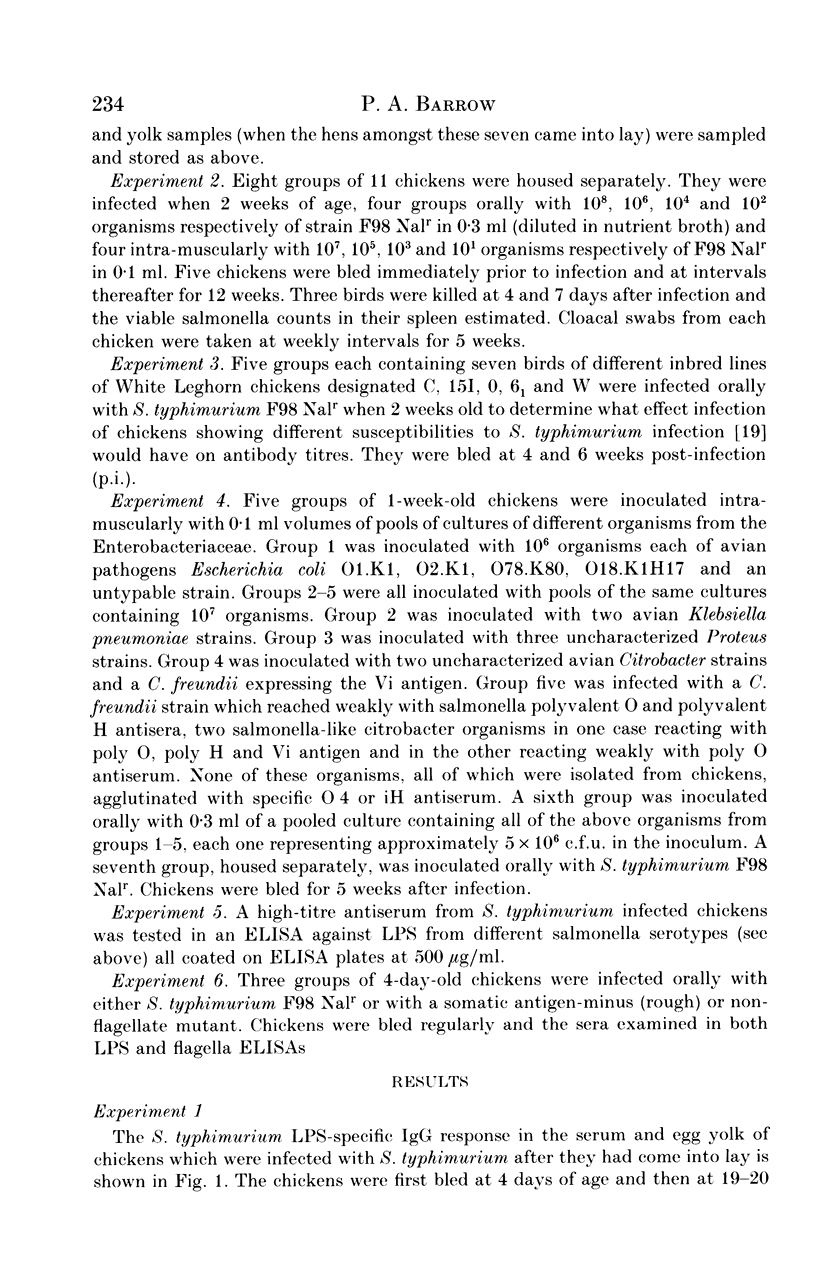

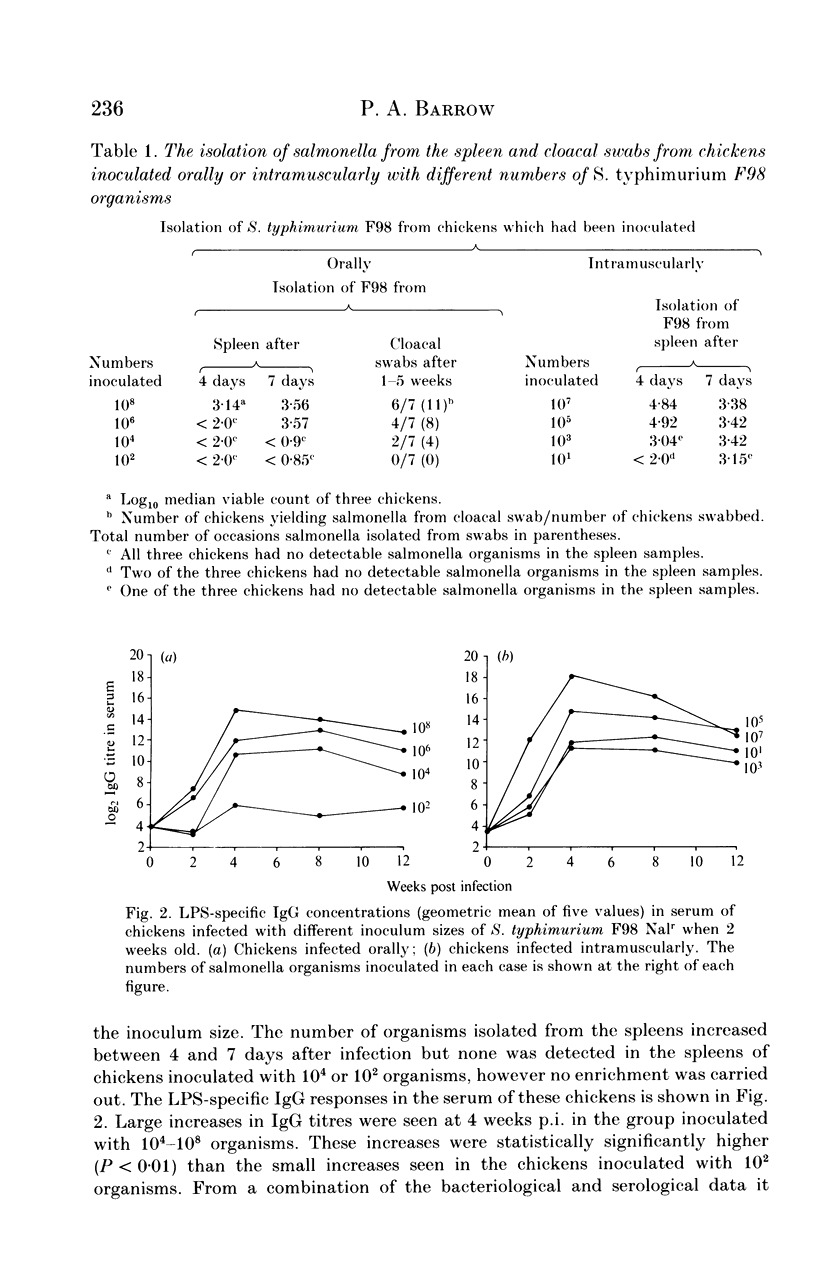
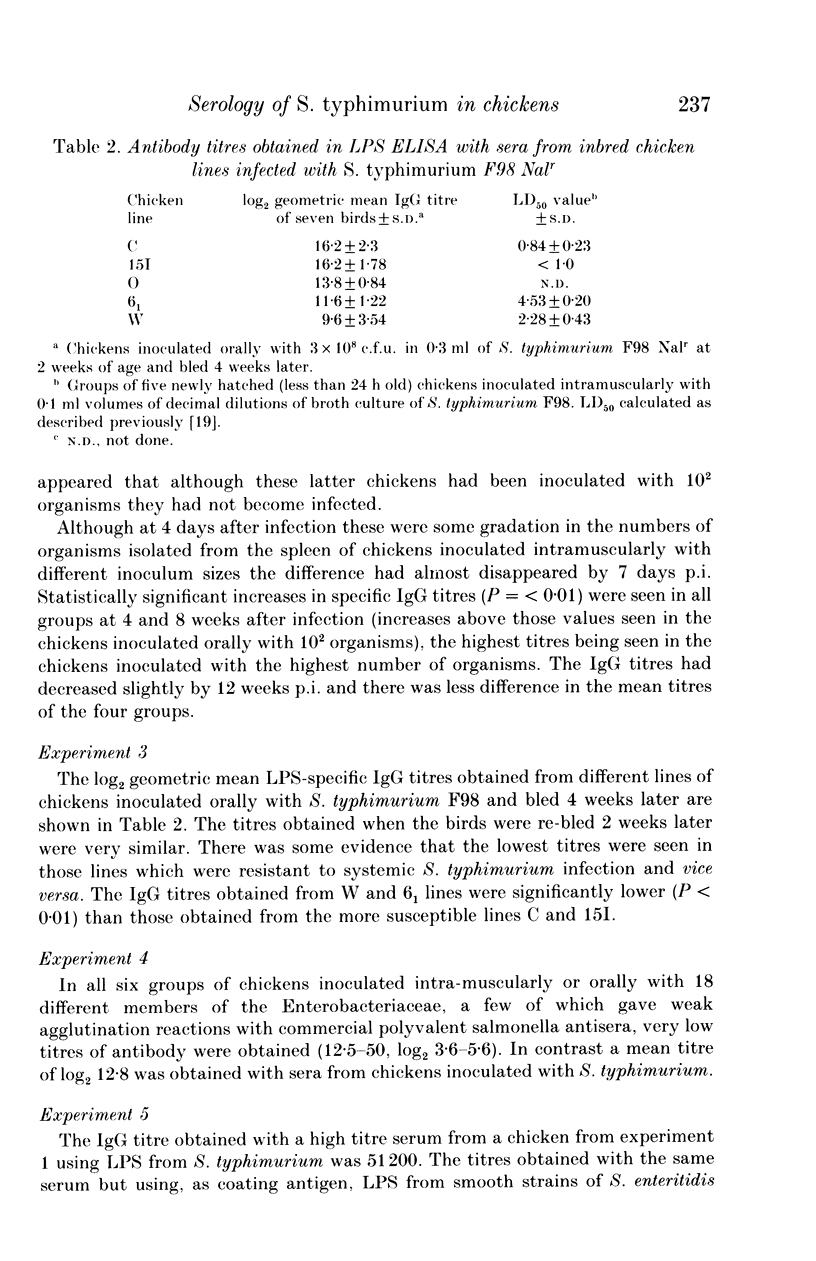
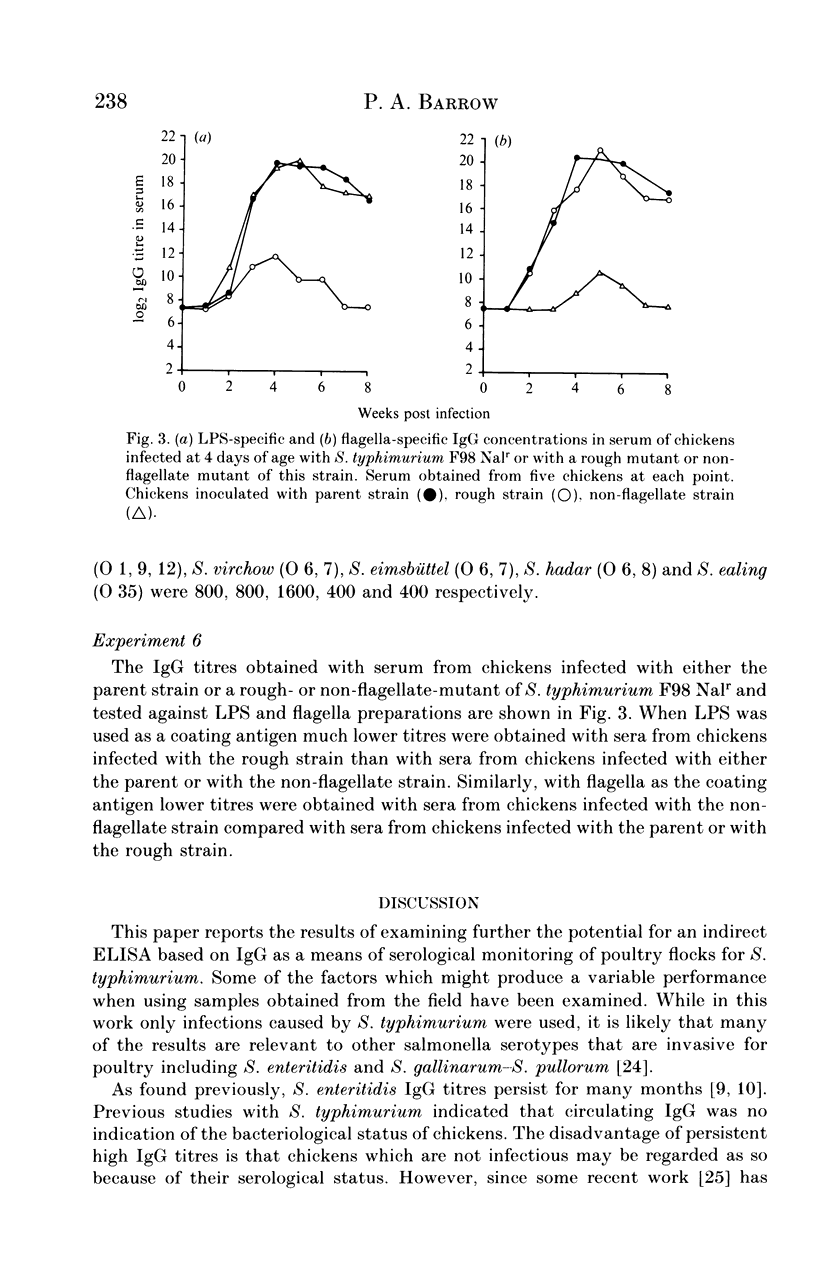
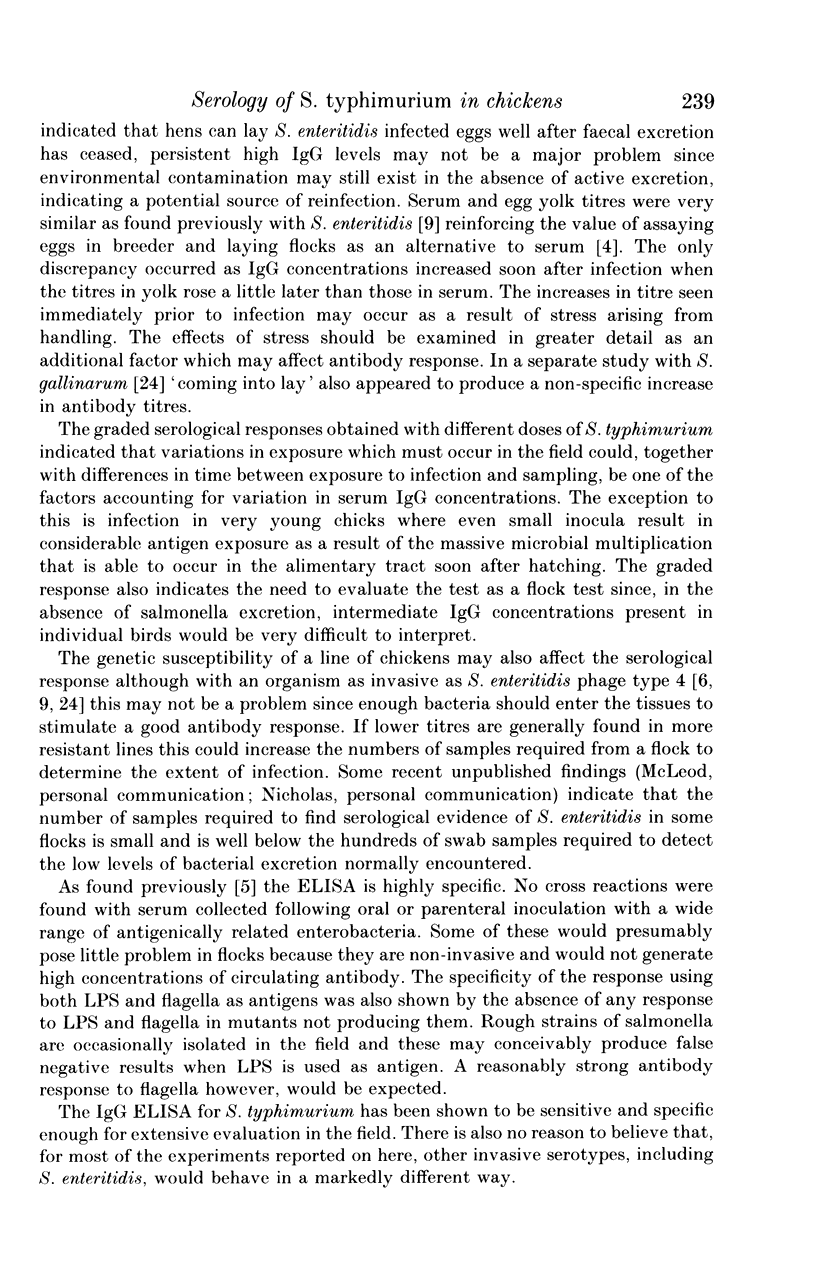
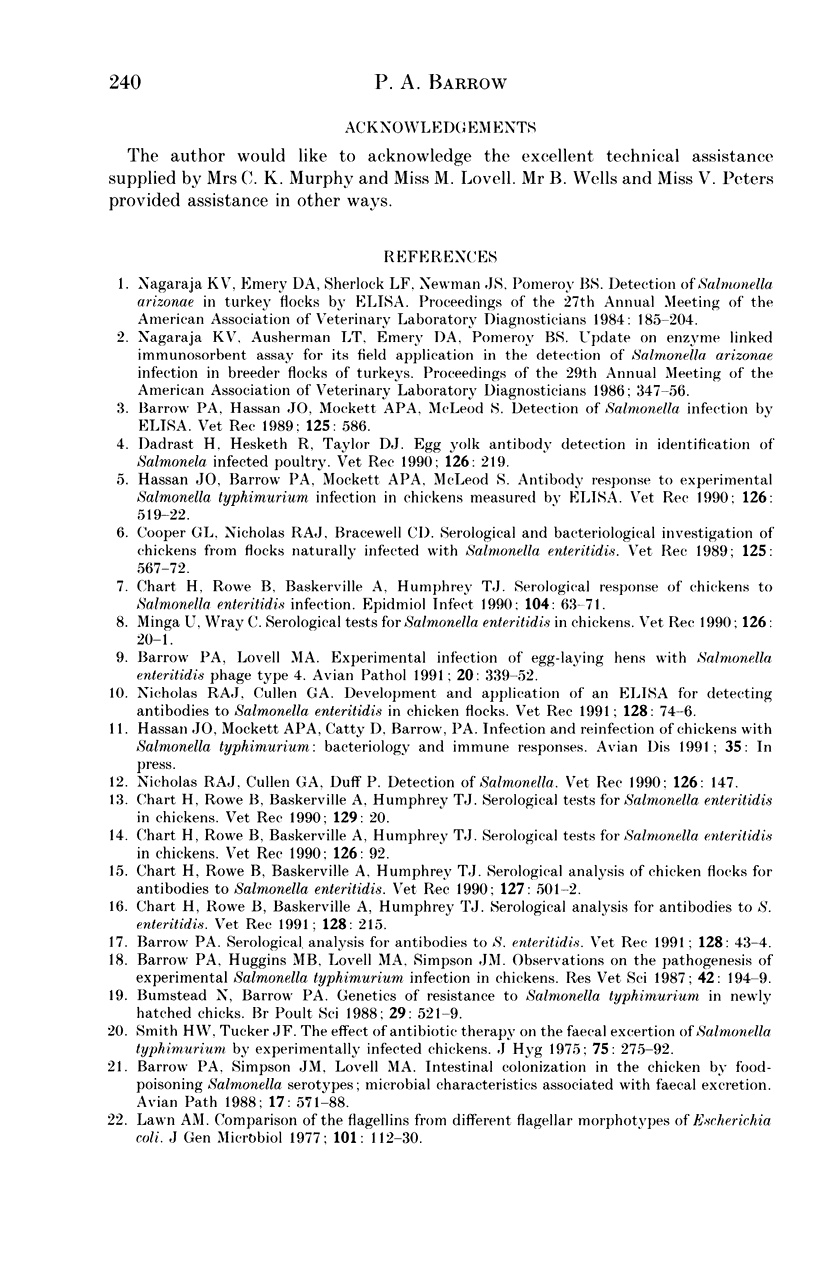

Selected References
These references are in PubMed. This may not be the complete list of references from this article.
- Barrow P. A., Huggins M. B., Lovell M. A., Simpson J. M. Observations on the pathogenesis of experimental Salmonella typhimurium infection in chickens. Res Vet Sci. 1987 Mar;42(2):194–199. [PubMed] [Google Scholar]
- Barrow P., Hassan J. O., Mockett A. P., McLeod S. Detection of Salmonella infection by ELISA. Vet Rec. 1989 Dec 2;125(23):586–586. [PubMed] [Google Scholar]
- Barrow P. Serological analysis for antibodies to S enteritidis. Vet Rec. 1991 Jan 12;128(2):43–44. doi: 10.1136/vr.128.2.43. [DOI] [PubMed] [Google Scholar]
- Bumstead N., Barrow P. A. Genetics of resistance to Salmonella typhimurium in newly hatched chicks. Br Poult Sci. 1988 Sep;29(3):521–529. doi: 10.1080/00071668808417078. [DOI] [PubMed] [Google Scholar]
- Chart H., Rowe B., Baskerville A., Humphrey T. J. Serological analysis for antibodies to S enteritidis. Vet Rec. 1991 Mar 2;128(9):215–215. doi: 10.1136/vr.128.9.215-a. [DOI] [PubMed] [Google Scholar]
- Chart H., Rowe B., Baskerville A., Humphrey T. J. Serological analysis of chicken flocks for antibodies to Salmonella enteritidis. Vet Rec. 1990 Nov 17;127(20):501–502. [PubMed] [Google Scholar]
- Chart H., Rowe B., Baskerville A., Humphrey T. J. Serological response of chickens to Salmonella enteritidis infection. Epidemiol Infect. 1990 Feb;104(1):63–71. doi: 10.1017/s0950268800054534. [DOI] [PMC free article] [PubMed] [Google Scholar]
- Chart H., Rowe B., Baskerville A., Humphrey T. J. Serological tests for Salmonella enteritidis in chickens. Vet Rec. 1990 Jan 27;126(4):92–92. [PubMed] [Google Scholar]
- Cooper G. L., Nicholas R. A., Bracewell C. D. Serological and bacteriological investigations of chickens from flocks naturally infected with Salmonella enteritidis. Vet Rec. 1989 Dec 2;125(23):567–572. [PubMed] [Google Scholar]
- Dadrast H., Hesketh R., Taylor D. J. Egg yolk antibody detection in identification of salmonella infected poultry. Vet Rec. 1990 Mar 3;126(9):219–219. [PubMed] [Google Scholar]
- Hassan J. O., Barrow P. A., Mockett A. P., Mcleod S. Antibody response to experimental Salmonella typhimurium infection in chickens measured by ELISA. Vet Rec. 1990 May 26;126(21):519–522. [PubMed] [Google Scholar]
- Humphrey T. J., Baskerville A., Chart H., Rowe B. Infection of egg-laying hens with Salmonella enteritidis PT4 by oral inoculation. Vet Rec. 1989 Nov 18;125(21):531–532. doi: 10.1136/vr.125.21.531. [DOI] [PubMed] [Google Scholar]
- Lawn A. M. Comparison of the flagellins from different flagellar morphotypes of Escherichia coli. J Gen Microbiol. 1977 Jul;101(1):112–130. doi: 10.1099/00221287-101-1-121. [DOI] [PubMed] [Google Scholar]
- Nicholas R. A., Cullen G. A. Development and application of an ELISA for detecting antibodies to Salmonella enteritidis in chicken flocks. Vet Rec. 1991 Jan 26;128(4):74–76. doi: 10.1136/vr.128.4.74. [DOI] [PubMed] [Google Scholar]
- Nicholas R. A., Cullen G. A., Duff P. Detection of salmonella. Vet Rec. 1990 Feb 10;126(6):147–147. [PubMed] [Google Scholar]
- Smith H. W., Tucker J. F. The effect of antibiotic therapy on the faecal excretion of Salmonella typhimurium by experimentally infected chickens. J Hyg (Lond) 1975 Oct;75(2):275–292. doi: 10.1017/s0022172400047306. [DOI] [PMC free article] [PubMed] [Google Scholar]


